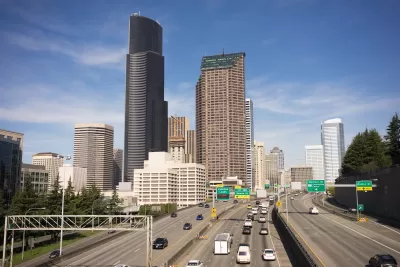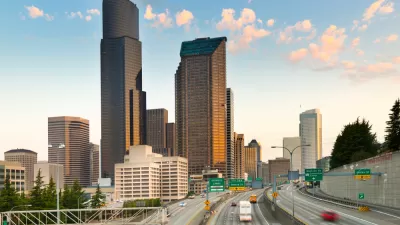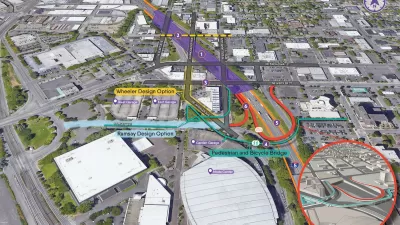The Washington Department of Transportation expanded part of I-5 in hopes of reducing a common traffic bottleneck.

“Drivers on Interstate 5 will endure less weaving and fewer waves of brake lights entering downtown Seattle, after the state finally widened the original northbound two-lane mainline to three lanes at Seneca Street,” reports Mike Lindblom for The Seattle Times.
The Washington State Department of Transportation (WSDOT) opened the project, in the works since 2007, “without fanfare” last weekend. “There wasn’t much hype because some features aren’t finished yet, spokesperson Amy Moreno said.”
According to the article, “Some drivers could find longer delays, because ramp-metering lights will operate in the collector-distributor lanes, where traffic from Interstate 90 merges into I-5 right of the mainline, as well as metering from the Cherry Street onramp.” Lindblom also points to the possibility of induced demand encouraging more drivers to take the new lane. “WSDOT doesn’t have any recent modeling or traffic predictions available for this long-developing project,” Lindblom notes.
FULL STORY: Seattle’s I-5 squeeze finally not so tight as new lane opens

Maui's Vacation Rental Debate Turns Ugly
Verbal attacks, misinformation campaigns and fistfights plague a high-stakes debate to convert thousands of vacation rentals into long-term housing.

Planetizen Federal Action Tracker
A weekly monitor of how Trump’s orders and actions are impacting planners and planning in America.

San Francisco Suspends Traffic Calming Amidst Record Deaths
Citing “a challenging fiscal landscape,” the city will cease the program on the heels of 42 traffic deaths, including 24 pedestrians.

Portland Raises Parking Fees to Pay for Street Maintenance
The city is struggling to bridge a massive budget gap at the Bureau of Transportation, which largely depleted its reserves during the Civd-19 pandemic.

Spokane Mayor Introduces Housing Reforms Package
Mayor Lisa Brown’s proposals include deferring or waiving some development fees to encourage more affordable housing development.

Houston Mayor Kills Another Bike Lane
The mayor rejected a proposed bike lane in the Montrose district in keeping with his pledge to maintain car lanes.
Urban Design for Planners 1: Software Tools
This six-course series explores essential urban design concepts using open source software and equips planners with the tools they need to participate fully in the urban design process.
Planning for Universal Design
Learn the tools for implementing Universal Design in planning regulations.
Gallatin County Department of Planning & Community Development
Heyer Gruel & Associates PA
JM Goldson LLC
City of Camden Redevelopment Agency
City of Astoria
Transportation Research & Education Center (TREC) at Portland State University
Jefferson Parish Government
Camden Redevelopment Agency
City of Claremont





























